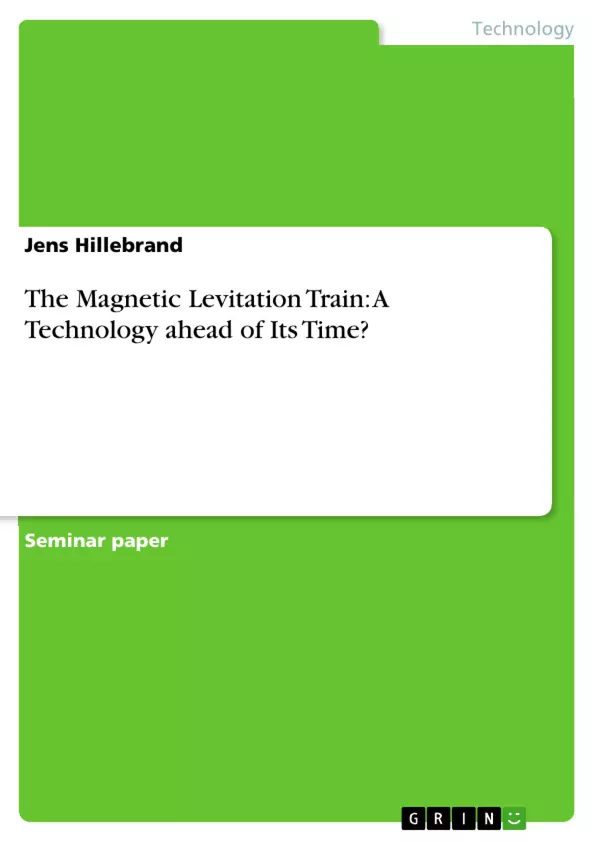The magnetic levitation train analysed in this study was developed in Germany by the Transrapid International GmbH & Co. KG, a joint venture by Siemens AG and ThyssenKrupp AG, as a means for high speed transportation. First prototypes were presented to the public as early as 1969 and 1979, yet, the first public high-speed maglev track was opened only four years ago in Shanghai, China. Despite the fact that businesspeople like engineers from all sorts of backgrounds speak very highly of the technology, the Shanghai track remains the only commercially operated one thus far.1 Purpose of this paper is to analyse the potential of the maglev train, to assess its strengths and weaknesses, and to spot opportunities as well as threats to the application of this state-of-the-art - or perhaps ahead-of-its-time - technology.
Table of Contents
- Introduction
- The Magnetic Levitation Train
- System & Technology
- The Maglev Train around the World
- Market and Product Analyses
- PESTE(L) Analysis
- SWOT Analysis
- Conclusion
- Bibliography
Objectives and Key Themes
This paper explores the potential of the maglev train as a high-speed transportation option. It aims to assess the technology's strengths and weaknesses, as well as identify opportunities and threats to its wider application. The paper analyzes the Maglev train's potential for high-speed public transportation, evaluating its advantages and disadvantages.
- The Technology and Functionality of the Maglev Train
- The Maglev Train's Global Market Presence and Application
- Market and Product Analyses including PESTLE and SWOT Analyses
- The Potential for Wider Adoption of Maglev Technology
- Challenges and Opportunities Facing the Maglev Train's Development and Deployment
Chapter Summaries
The paper begins by introducing the maglev train, developed by Transrapid International GmbH & Co. KG, as a high-speed transportation system. The introduction highlights the history of the maglev train, from its early prototypes to the first commercial line in Shanghai, China. The paper then delves into the technology behind the maglev train, explaining its components, such as the guideway, vehicles, levitation system, and propulsion system. The paper examines the current state of the maglev train around the world, specifically focusing on the Shanghai line and the potential for future projects in the Middle East. The paper also explores the market and product analyses, including PESTLE and SWOT analyses, to understand the challenges and opportunities facing the maglev train's future.
Keywords
The main keywords and focus topics of this paper include magnetic levitation train, high-speed transportation, Transrapid International, guideway, vehicles, levitation system, propulsion system, Shanghai, Middle East, PESTLE analysis, SWOT analysis.
- Quote paper
- Jens Hillebrand (Author), 2008, The Magnetic Levitation Train: A Technology ahead of Its Time?, Munich, GRIN Verlag, https://www.grin.com/document/115370



